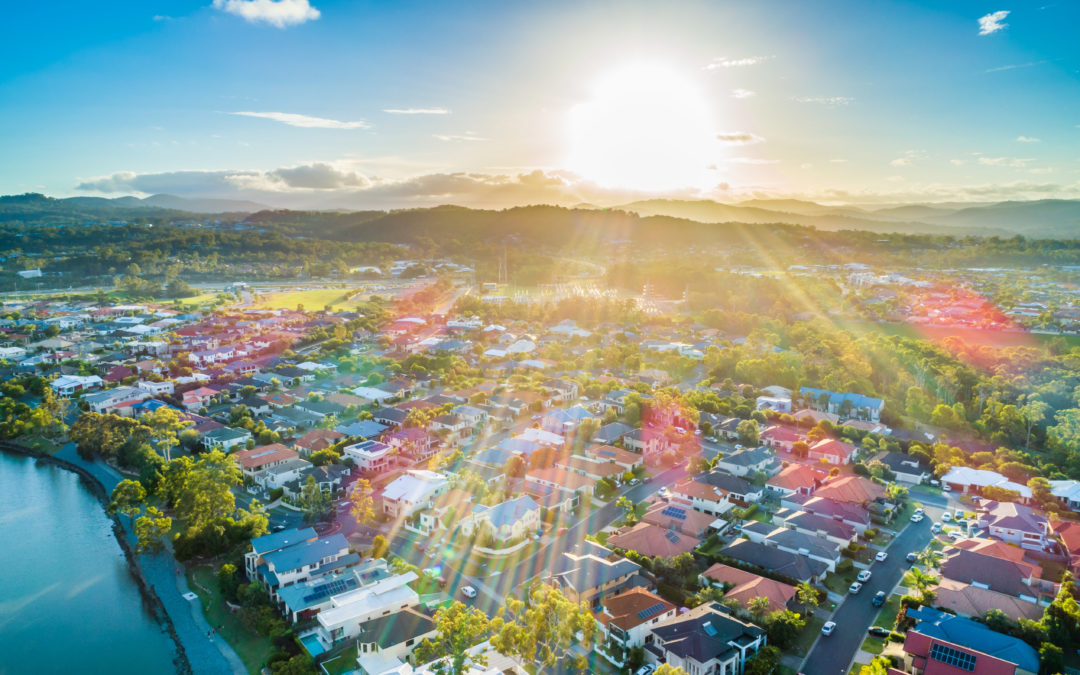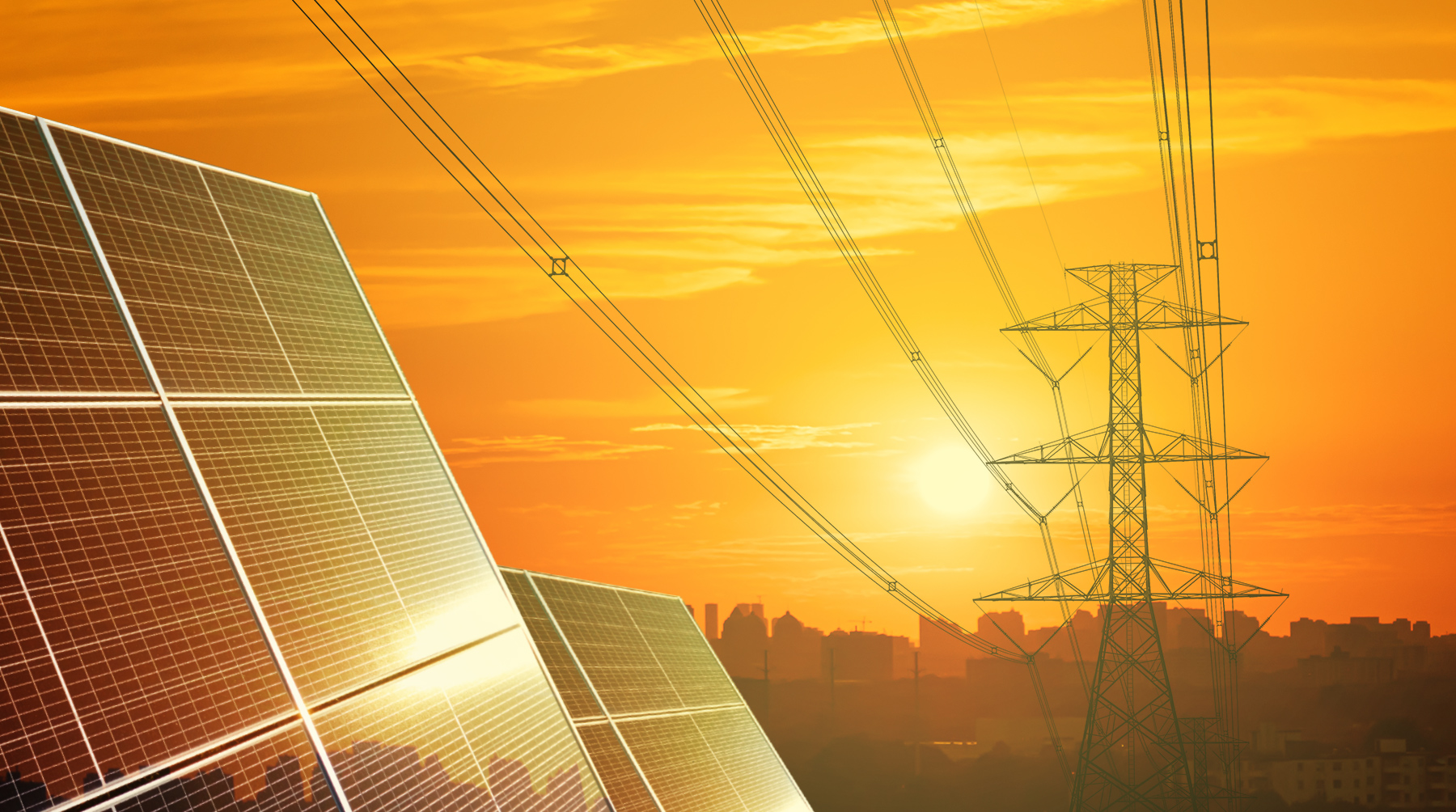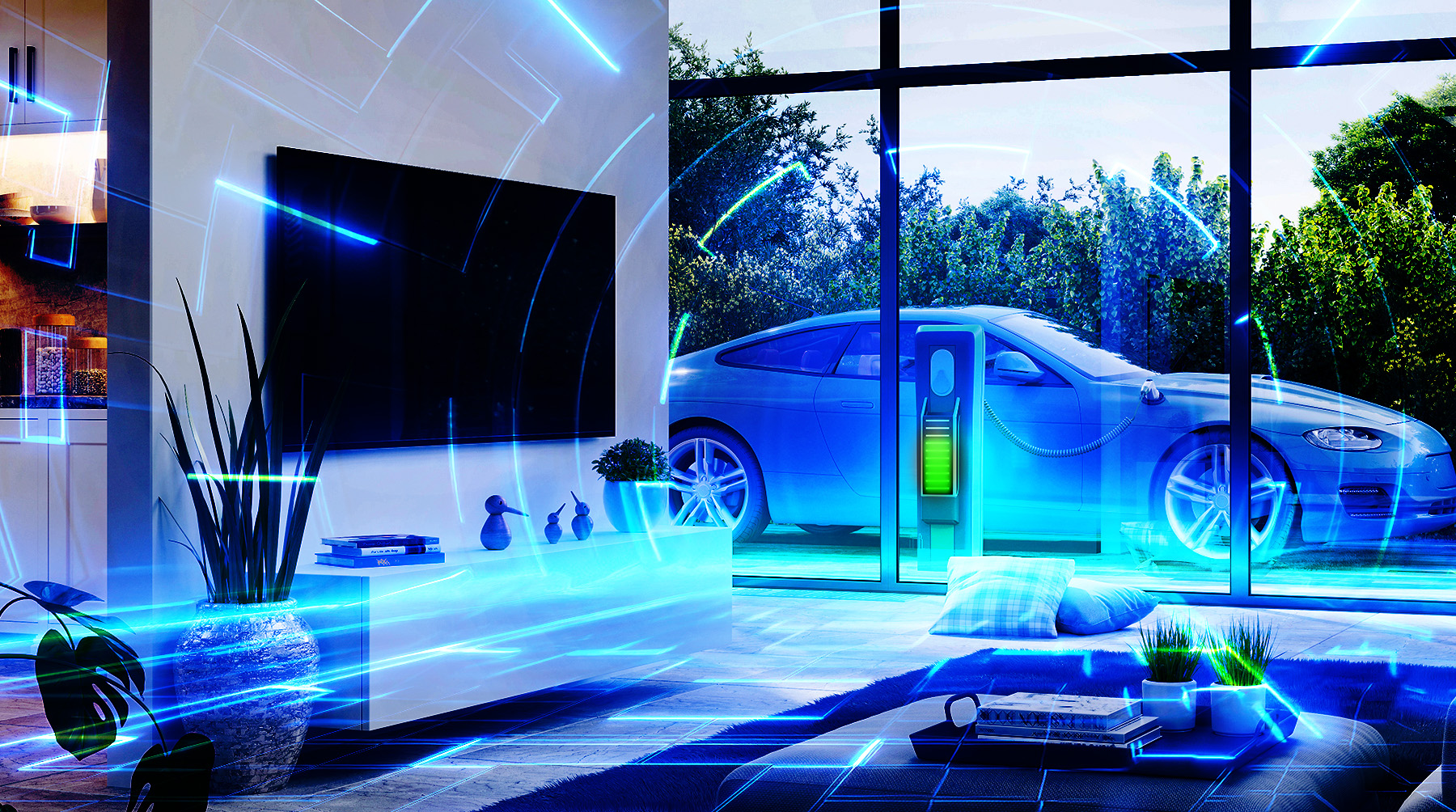An interview with Lucy Carpenilli, Solution Architect at Evergen
Everything you need to know about Virtual Power Plants (VPPs).
1. What is a VPP?
A Virtual Power Plant (VPP) is a collection of generators or energy storage units that act together to generate electricity and are operated by a single, centralised control system. Any asset that stores, produces or consumes electricity can become a part of a Virtual Power Plant.
For example, imagine a geographical area like NSW, that has many small generation and storage assets, including solar panels, household batteries and small wind farms. All of these generation assets together can act in concert to power the community, as if they were a single big power plant.
A single home with solar panels and battery may have some excess capacity, so that home in concert with hundreds or thousands of other homes, can collectively participate in lucrative energy trading markets. Their collective power allows them to do this, as these markets are inaccessible to a single home.
2. Why did VPPs start?
The driving force behind VPPs is the decarbonisation of energy. Once you start looking at renewable energy sources, you realise that it is less practical to have a small number of big things, like coal-fired generators, and it is more practical to have lots of little things acting together. This is an inherent characteristic of renewable energy meaning that we have to work differently.
Examples of VPPs exist around the world, notably in Japan, USA, Europe and Australia. In 2016, AGL announced a 5 MW VPP scheme for Adelaide, with 1,000 households and businesses participating. Worth $20 million AUD, the scheme was the largest in the world.
The concept of VPPs has been proven and there are real customers earning revenue from VPP participation, but no one is quite sure what the optimal operating model is. No one knows the best way to create, trade and manage a VPP. There is work to be done here and Evergen is a big part of this disruption.
3. As a consumer how does it work?
From a consumer’s perspective, a VPP allows for additional household income on top of the benefits of self consumption. To participate in a VPP a household will sign a contract to be part of a VPP with either a retailer, network operator, a DER aggregator like Evergen or hardware vendor who also retails energy such as Tesla or Sonnen.
There are two ways that the VPP may operate. The VPP may state ‘we will take control of the consumer’s asset, use it and make money and the consumer also makes money from it’ and/or the VPP states ‘we respect how you use your asset and we are going to identify points where you have excess capacity and we are going to use that as part of the VPP and derive additional savings or benefits’.
Network operators are increasingly interested in VPPs as a way to stabilise the grid and postpone network expansions. Evergen is supporting the Ausgrid VPP by providing a platform that enables Ausgrid to make decisions about how to deploy the energy of customers who have signed up to the VPP. This generally involves either charging a fleet simultaneously or discharging it.
4. What are the key benefits for industry in VPPs?
There are two key benefits available to industry participating in a VPP. The first is additional revenue streams. The second, which is a little more subtle, is increased awareness of energy consumption, how the costs work and a better relationship with retailers, hopefully resulting in a tailored energy plan.
This has a flow-on effect: learnings can be taken from a workplace and into people’s homes. The more people engage with energy, the more they can improve their bills and reduce their impact on the environment.
5. What are the key benefits for consumers in VPPs?
We talk about consumers becoming ‘prosumers’. This is not just about consumers having solar generation and storage in their home, but actively participating in energy markets and seeking VPPs that are valuable for the investments that they have made. This also includes changing their behaviour to move some of their evening consumption to during the day to best utilise PV generation – this can save consumers loads of money by making some simple changes.
6. What are the key benefits for the environment in VPPs?
I think we all know that we have to decarbonise. Energy (electricity) contributes 35% to our carbon footprint. Decarbonisation is not just about changing our energy sources. It is about changing the way we interact with power systems and the way that energy is transported. The transmission system has operated a certain way for more than 100 years and it has to change to accommodate for the decarbonisation of energy.
In Australia, we have very different problems compared to the US or Europe. In Australia, the key issue on the minds of regulators and network operators right now is how to handle peak solar generation and solar curtailment. Solar curtailment, where network operators have the ability to turn off solar panels, is already happening and will become more common. This means that customers will be hit with reduced feed in tariffs in the near future. So we need to find ways to soak up solar generation and VPPs aggregating batteries are part of that solution.
In Europe the regulators are far more concerned with electric vehicles which are increasingly popular. Electric vehicles are potentially a stabilising force on the grid, but no one really knows how to incentivise these desirable grid-stabilising behaviours. I think in Australia there will be massive change in the next five years, because it is crunch time. Coal-fired power plants are going to be decommissioned and we will have a massive need for inertia replacement and other DER-driven actions to support the grid.
7. How are Microgrids and DER tied into new forms of energy systems?
Distributed Energy Resources (DER) are the building blocks of the new energy landscape. Examples of DER can be solar panels on your roof, household batteries or even demand response (demand response is turning stuff off at the direction of a retailer or network.).
When we stack those up into a group that can be orchestrated by a company such as Evergen, then we have a VPP – an orchestration of lots of little things.
A Microgrid could be described as a special kind of VPP where the assets are co-located in a small area, like a single neighbourhood. Microgrids aim to have a degree of self-sufficiency for generation and consumption. This self-sufficiency depends on local energy trading. For example, one home may generate energy from their solar panels and then sell it to their neighbour or someone down the street. Microgrids rely on smart systems to track energy flows and the financial transactions that result.
Microgrids are geographically contained and there is a physical flow of energy that is traded locally. A VPP can be dispersed across a large area (like NSW) and operates on the wholesale market.
Microgrids are potentially useful for remote areas. For people living a long way from a transmission network, an off-grid source of energy can be more reliable and less costly than connecting to the grid. Such a setup is termed a Stand-alone Power (SaP) system. There is potential to use Microgrid technology in these locations. A remote community could be set up with PV, batteries and a backup generator to create a small network that is not connected to the main transmission lines.
8. How does Evergen Intelligent Control work in a VPP environment?
The value of Evergen Intelligent Control is that it puts customer first. When we consider DER and VPPs, there are many parties who want a slice of the pie. Energy retailers want to get involved so they can reduce their costs of buying wholesale energy, networks want to get involved because they need to manage the grid and vendors want to get involved to find ways to make their products more desirable for consumers.
Evergen Intelligent Control predicts household consumption and solar production. Having prediction capability means we can supply Ausgrid with a clear prediction of what energy will be available. This means that customers are not on the hook to supply generation that they do not have. We understand the customer’s opportunity cost of giving Ausgrid access to a household’s energy system which is why we’ve implemented a set of rewards & incentives with Ausgrid to reward consumers for the actions they wish to take. These incentives are managed and paid directly between Evergen (as the enabler) and the consumer, negating the need to involve the electricity retailer, making it super simple for consumers to opt in to the VPP.
Evergen’s position is to create optimisation that respects and honours the customer, but generates the maximum possible value for the system as a whole. By doing site specific optimisation, we can ensure that the customer is getting the best possible deal from all the different players. By orchestrating fleets across different sections of the NEM, and the SWIZ (in WA) we are able to leverage these many groups of small assets to add stability and resilience to the system as a whole.



